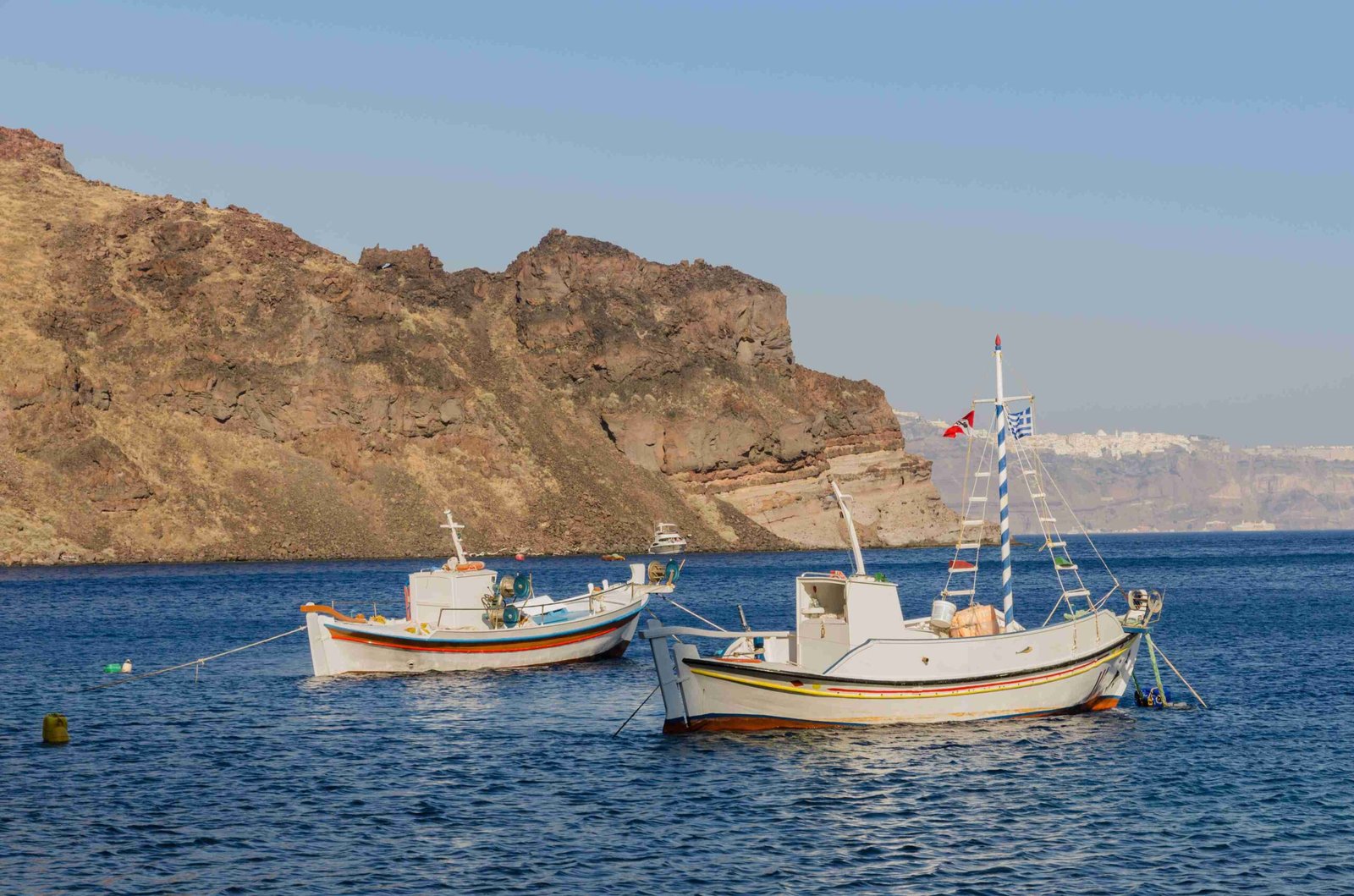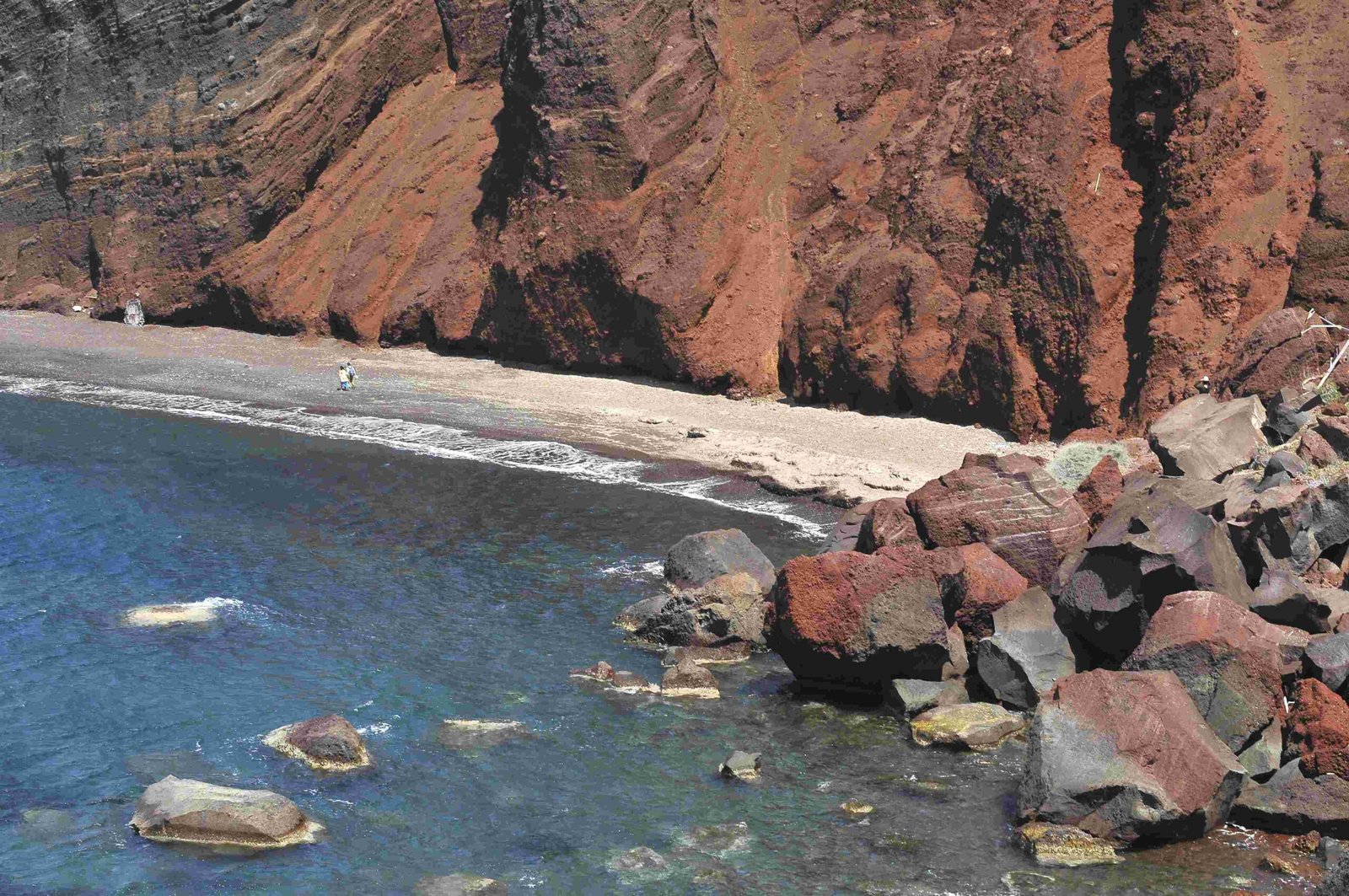Santorini, renowned for its stunning landscapes and unique beaches, has been the subject of misconceptions regarding a ‘Flamingo Beach’ with pink sand. This article clarifies the truth about Santorini’s beaches, focusing on the famous Red Beach and its distinctive characteristics. While there’s no pink sand or flamingo-themed beach in Santorini, the island’s volcanic geology creates a spectrum of colorful shores that captivate visitors from around the world.
What Are the Characteristics of Santorini’s Unique Beaches?

Santorini’s beaches are a testament to the island’s volcanic origins, offering a diverse palette of colors and textures. The most famous among these is the Red Beach (Kokkini Paralia), often mistaken for a pink or ‘flamingo’ beach. Here are the key characteristics:
- Composition: Rich in iron-laden volcanic soil
- Color: Deep red to reddish-brown
- Texture: Coarse sand mixed with pebbles
- Surroundings: Towering red cliffs and crystal-clear blue waters
The unique coloration comes from the oxidation of iron in the volcanic soil, creating a striking contrast against the Aegean Sea.
Why Is There No ‘Flamingo Beach’ in Santorini?

The concept of a ‘Flamingo Beach’ in Santorini is a misconception. Here’s why:
- No pink sand beaches exist on the island
- Flamingos are not native to or commonly found in Santorini
- The confusion may stem from marketing materials or misidentification of the Red Beach
Santorini’s beaches are primarily characterized by their volcanic nature, resulting in black, red, and white sand beaches, but not pink.
What Activities Can Visitors Enjoy at Santorini’s Red Beach?
While there’s no ‘Flamingo Beach’, the Red Beach offers a unique experience:
- Swimming: Possible, but caution is advised due to occasional rockfalls
- Sunbathing: Limited space, but a unique setting
- Photography: Stunning views of the red cliffs and blue sea
- Hiking: A short trail leads to the beach, offering scenic vistas
Note that organized water sports are not typically available at Red Beach due to its small size and protected status.
When Is the Best Time to Visit Santorini’s Beaches?
To make the most of your visit to Santorini’s unique beaches:
| Season | Pros | Cons |
|---|---|---|
| Spring (April-June) | Mild weather, fewer crowds | Water may be cool for swimming |
| Summer (July-August) | Warm water, lively atmosphere | Very crowded, hot temperatures |
| Autumn (September-November) | Pleasant weather, less crowded | Some facilities may start closing |
| Winter (December-March) | Quiet, authentic experience | Many businesses closed, cool temperatures |
For the best balance of good weather and manageable crowds, aim for late spring or early autumn.
Where Can Visitors Stay Near Santorini’s Colorful Beaches?
Accommodation options near Santorini’s unique beaches include:
- Akrotiri Area: Closest to Red Beach
- Boutique hotels
- Traditional cave houses
-
Luxury villas with caldera views
-
Perissa and Perivolos: Near Black Beach
- Beachfront resorts
- Budget-friendly guesthouses
-
Family-run hotels
-
Oia and Imerovigli: Luxury options with caldera views
- High-end hotels with infinity pools
- Private villas with concierge services
- Romantic suites for couples
Prices vary significantly based on location, season, and amenities, ranging from €50 for budget options to €500+ for luxury accommodations.
How Can Visitors Reach Santorini’s Red Beach?
Accessing the Red Beach requires some effort:
- By Car or ATV:
- Drive to Akrotiri
- Park in the designated area
-
Follow the hiking trail (about 10 minutes)
-
By Bus:
- Take the bus to Akrotiri from Fira
-
Walk to the beach trail (about 20 minutes)
-
By Boat:
- Join a boat tour from Akrotiri port
- Enjoy views from the sea and potential stops for swimming
Always check local guidelines, as access may be restricted due to safety concerns related to rockfalls.
What Should Visitors Know About Beach Safety in Santorini?
Safety considerations for Santorini’s beaches, especially the Red Beach:
- Rockfall Risk: Be aware of potential falling rocks from the cliffs
- Sun Protection: Limited shade available, bring sunscreen and hats
- Footwear: Wear sturdy shoes for the hike to the beach
- Water Conditions: Strong currents possible, swim with caution
- Facilities: Limited amenities, bring water and snacks
Always follow local safety guidelines and respect any closure notices.
How Does Santorini’s Red Beach Compare to Other Colored Beaches Worldwide?
While not pink like some famous beaches, Santorini’s Red Beach is unique:
| Beach | Location | Color | Cause of Color |
|---|---|---|---|
| Red Beach | Santorini, Greece | Red | Iron-rich volcanic soil |
| Pink Sands Beach | Harbour Island, Bahamas | Pink | Crushed coral and shells |
| Pfeiffer Beach | California, USA | Purple | Manganese garnet deposits |
| Green Sand Beach | Hawaii, USA | Green | Olivine crystals |
Santorini’s Red Beach stands out for its dramatic setting and volcanic origin.
What Photography Tips Can Enhance Visitors’ Red Beach Experience?
Capture the beauty of Santorini’s Red Beach with these tips:
- Timing: Shoot during golden hour for warm, dramatic lighting
- Perspective: Include the red cliffs and blue sea for contrast
- Panoramas: Use wide-angle shots to capture the entire landscape
- Details: Focus on textures of the sand and rocks
- People: Include human subjects for scale and interest
- Underwater: Consider waterproof cameras for unique sea-level shots
Remember to respect the environment and other visitors while photographing.
In conclusion, while the concept of ‘Flamingo Beach pink sand Santorini beaches’ is a myth, the reality of Santorini’s unique volcanic beaches, particularly the Red Beach, offers an equally captivating experience for visitors. The island’s geological wonders provide a one-of-a-kind backdrop for unforgettable memories and stunning photographs.
References:
1. https://therafoundation.org/santorini-beaches/pink-beach-santorini
2. https://www.pureorganicworld.com/elafonissi-beach-pink-sand-turquoise-water/
3. https://twogetlost.com/pink-sand-santorini-beaches

